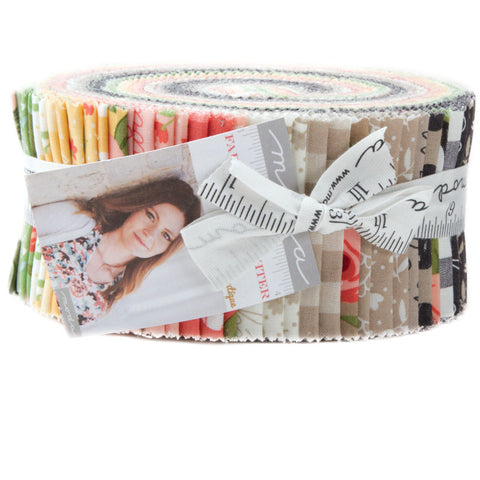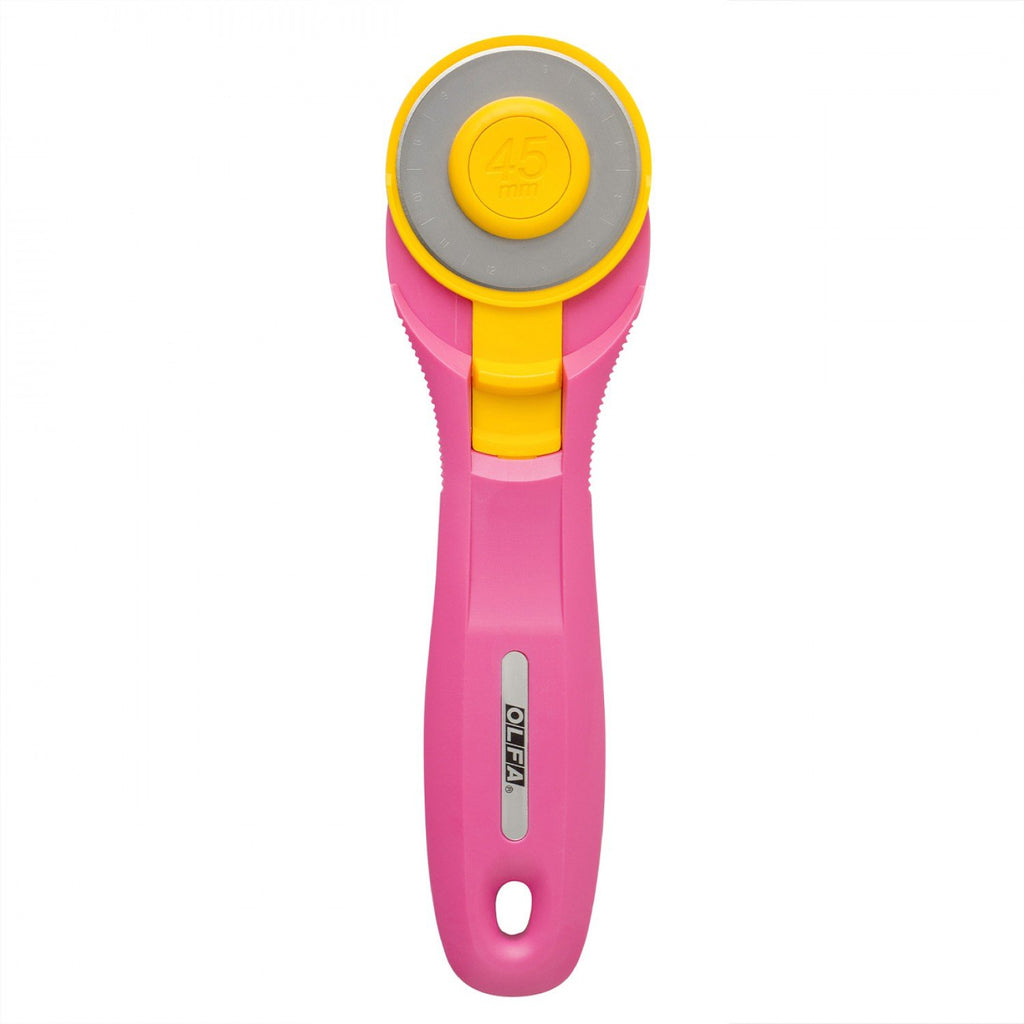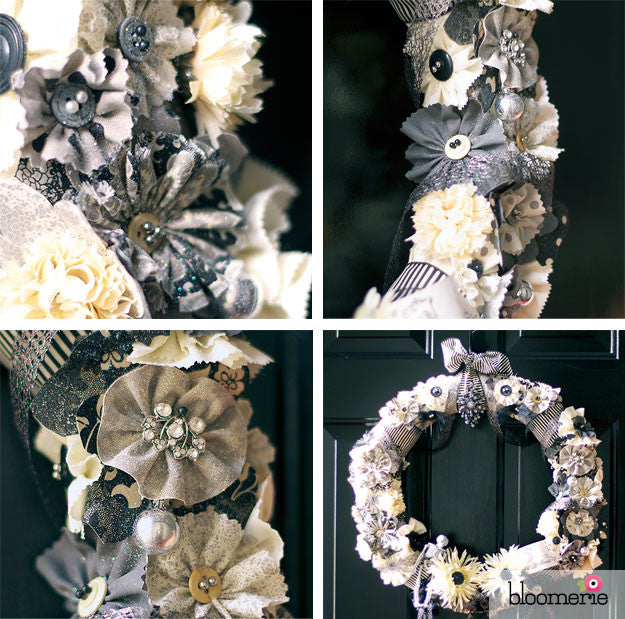-
August 13, 2020A quick guide to pre-cut lingo
-
August 13, 2020
Supplies for Beginning Quilters: Cutting Tools
Did y'all know that we love what we do?
It's true! And we really love hearing from people who are new to quilting and are looking for a few tips on getting started. We love it so much that we thought it might be nice to share with the rest of the world!
There really are lots of wonderful perks to running Bloomerie Fabrics. Even though we operate strictly online, we do get the pleasure of 'meeting' beginning quilters and sewists who are excited to get started. And like any time we try something new, we don't always know what we'll really need. Not a list of the things experienced or specialized quilters need -- but the basics that whet our appetite, allow us to get started, allow us to successfully cut, piece, bind and quilt, and give us a collection of tools and supplies that we can build on as we get more serious about quilting.
So we've decided to put together this post to welcome new quilters (YAY!) and give you the low down on what must-have tools and supplies you're going to need for your first quilt.
Cutting Tools
Let's start with the holy trinity of cutting tools: self-healing cutting mat, rotary cutter and scissors. These are absolutely essential for quilting at all levels.
Self-Healing Cutting Mat
When it comes to quilting and sewing, there is no other tool used more frequently than the self-healing cutting mat -- sewing machine aside.
These are those kind-of-hard-but-still-bendy gridded mats you may have seen in craft and fabric stores. They manage to withstand the abuse sustained from the sharp blades of rotary cutters, time after time. (Side note: They will eventually need to be replaced, depending on how frequently you cut. We happen to cut A LOT -- so we require a new one once every 2 years or so. The average quilter should be able to go a lot longer than that!)
They come in a variety of sizes, from small (like 8" x 8") to large (like 36" x 72" and bigger). The size you choose is a matter of personal preference and space, but we recommend at least an 18" x 24" or 24" x 36" if you have the space.
Rotary Cutter
Precise cuts are key for quilting -- and the best way to get these is with a rotary cutter.
When you shop for one, you'll probably be surprised by the number of options available. But we're going to share a few tips to help you cut through the variety and quickly hone in on a great first rotary cutter.
Size - Rotary cutters typically come with either a 28mm, 45mm or 60mm blade. Stick with a 45mm for your first one.
Safety - This is a big one -- especially if you have kids or like having your fingers. (And we suspect that pretty much covers everyone!) You'll find some rotary cutters rely on pressure to automatically hide the blade when not in use, some rely on a latch or other manual mechanism that you'll engage and disengage to hide/reveal the blade, some will come with a blade cover, and... believe it or not... some have nothing. I've used the first two mentioned here and they're both just fine. My personal preference, though, is the one with a manual safety latch since accidental pressure won't reveal the blade and cause anything unexpected. (Can you tell I have kids?)
Feel - Once you've narrowed it down to size and safety options, try holding the remaining 'prospects' in your hand to see how they feel. And take note if it's for right, left or right- and left-handed people. Choose appropriately.
Scissors
I'm guessing you probably have a pair or two of these laying around the house right now. As long as they're not the kid ones, they'll do just fine for someone starting out. Just make sure they're gunk-free and are reasonably sharp. (You can always do a little home-sharpening of your scissors by folding a piece of aluminum foil a couple times and then cutting some straight lines in it. It's not a professional-grade sharpening, but it will help out.)
-
May 09, 2020
Where can I donate quilt fabric?
The day has come. You know the one where you're thumbing through your fabric and you ask yourself, "Why did I buy this?" and "Where did this come from?" Or maybe you look around your sewing space and you just see stacks and piles and overflowing bins of fabric you're no longer inspired by.
But it's perfectly good fabric, you tell yourself. Surely someone can use it. But who? And where can I donate quilt fabric?
Luckily, there are lots of places that accept donations of quilt fabric. We've compiled a brief list of some charitable organizations in the USA below. And at the bottom of this post, you'll find a few other ideas of places that might accept fabric donations.
Coffee Creek Quilters
Coffee Creek Quilters teaches quilting classes to women incarcerated at the Coffee Creek Correctional Facility in Wilsonville, Oregon. They accept donations of 100% quilting weight cotton fabric (must be at least 1 yard), minky and flannel fabric (40" x 60" minimum), cotton batting (minimum 60" x 80"), sewing tools (rotary cutters, scissors, cutting mats, threads, etc.), and portable sewing machines.This is a registered 501(c)(3) organization.
Creative Reuse Centers
These creative reuse centers seem to be cropping up all across America and aim to divert usable waste (like fabric) from landfills for use in creative projects. The ones listed below all accept donations of fabric and other materials. Look up the donation requirements on each site to see what kinds of fabric and sizes are acceptable. It's worth noting that many of these require donations be made in-person.- Austin Creative Reuse (Austin, TX)
- East Bay Depot for Creative Reuse (Oakland, CA)
- Lancaster Creative Reuse (Lancaster, PA)
- Pittsburgh Center for Creative Reuse (Pittsburgh, PA)
- Reconsidered Goods (Greensboro, NC)
- Re-use Market (Garden City, ID)
- SCRAP (San Francisco, CA)
- Scrap Exchange (Durham, NC)
- Scrap It Up (Cincinnati, OH)
- Scraps KC (Kansas City, MO)
- SCRAP USA (Baltimore, MD; Ann Arbor, MI; Denton, TX; Humboldt, CA; Portland, OR; and Richmond, VA)
- Upcycle Creative Reuse Center (Alexandria, VA)
- Who Gives A Scrap (Colorado Springs and Fort Collins, CO)
All listed above are registered 501(c)(3) organizations.
Quilts from Caring Hands
Quilts from Caring Hands makes and distributes quilts to at-risk children in Oregon's Willamette Valley area. They accept 100% cotton fabric in large pieces or pre-printed panels. They also accept textured fabric (like fleece), pieced blocks, unfinished quilt tops, and completed quilts.This is a registered 501(c)(3) organization.
Quilts of Valor
The mission of Quilts of Valor is to "cover service members and veterans touched by war with comforting and healing" quilts. They accept donations of new 100% quilting weight cotton fabric. The fabric must be stain- and odor-free, and donations of red/white/blue fabrics are preferred (though not required).This is a registered 501(c)(3) organization.
Snuggled in Hope
Snuggled in Hope is a 100% volunteer- and donation-based organization that makes quilts and pillowcases for the campers at Flying Horse Farms in Ohio. (Flying Horse Farms provides camp experiences to children with serious illnesses, and is a member of Paul Newman's SeriousFun Children's Network.) They accept donations of 100% cotton fabric (cheerful, kid-friendly prints; no glittery fabric; no flannel, fleece, denim, or knits) and quilting supplies like rotary cutters, replacement blades, cutting mats, and quilting rulers.This is a registered 501(c)(3) organization.
The Sewing Labs
This non-profit community sewing center located in Kansas City, MO, teaches sewing to at-risk individuals with the hope of breaking the generational cycle of poverty and addiction. They accept donations of clean fabric (quilting, garment, and upholstery), notions, tools, interfacings, quilt batting, and working sewing machines.This is a registered 501(c)(3) organization.
Victoria's Quilts
Victoria's Quilts makes quilts for cancer patients of all ages, stages, and types of cancer within the USA. They accept donations of new, clean, 100% cotton fabric or cotton flannel in pieces that are at least 1-yard in length. Fabric must not be previously used or laundered.This is a registered 501(c)(3) organization.
Wrap Them in Love Foundation
The mission of Wrap Them in Love is to distribute quilts to children around the world through local food banks, orphanages, shelters, hospitals, and those in natural disasters. They accept donations of fabric, batting, sewing supplies, quilt tops, and finished quilts.This is a registered 501(c)(3) organization.
A few other places that might accept your quilt fabric donations:
- Local quilt guilds - You can start your search here or here
- Local donation centers like Goodwill and The Salvation Army Family Stores
- Local women's and homeless shelters
- Local schools and colleges
If you know of other registered charitable organizations that accept fabric donations, please feel free to leave them in the comments below.
Bloomerie Fabrics is an independent, woman-owned fabric shop offering modern fabric and precuts. Curating online since 2010.
-
May 09, 2020
A Jelly Roll Strip Quilt quilt-along - Part 1

We love getting emails from our customers, and from time to time we hear from people who are new to quilting and just don't know where to start. Inspired by y'all, we figured there was no better time than National Quilting Month than to welcome new quilters and host our very own Jelly Roll Strip Quilt quilt-along.
Now, if you're new to quilting and you're not quite sure what a jelly roll is, you may be wondering if we've got our heads screwed on straight because the last time you checked, jelly rolls were something you eat. So here's what we're talking about when we say jelly roll:
 Pretty nifty, huh? But you might still be wondering what this really looks like. So just imagine 40 strips of fabric, already cut to 2.5" wide and 44" long. Now roll them all up together and you get this adorable jelly roll, spirals and all.
Pretty nifty, huh? But you might still be wondering what this really looks like. So just imagine 40 strips of fabric, already cut to 2.5" wide and 44" long. Now roll them all up together and you get this adorable jelly roll, spirals and all.We're going to go ahead and get started today with the quilt-along. Today's easy... just gather up your supplies and clear some time off your schedule. Here's what you're going to need:
- Moda Jelly Roll (we're using Aneela Hoey's Little Apples)
- backing fabric - 1 3/4 yards
- quilt batting (45" x 60")
- coordinating 100% cotton thread
- rotary cutter
- cutting mat
- air erasable pen / Clover White Marking Pen / disappearing ink pen
- quilting rulers (6" x 24" and a 12.5" square will do perfectly; other similar sizes will work fine, too)
- Temporary Spray Adhesive/ Spray Basting
- sewing machine, of course!
All this for a finished quilt size that's approximately 42" x 56".
Check back in Monday, when we'll start working on our quilt top! Part 2
-
November 11, 2017
Makers gonna make -- and give!
Resources for the generous sewist -
September 20, 2016
Make a Pin-fully Delightful Halloween Wreath
Make a Halloween wreath with fabric strips.
- 1
- 2





 Pretty nifty, huh? But you might still be wondering what this really looks like. So just imagine 40 strips of fabric, already cut to 2.5" wide and 44" long. Now roll them all up together and you get this adorable jelly roll, spirals and all.
Pretty nifty, huh? But you might still be wondering what this really looks like. So just imagine 40 strips of fabric, already cut to 2.5" wide and 44" long. Now roll them all up together and you get this adorable jelly roll, spirals and all.